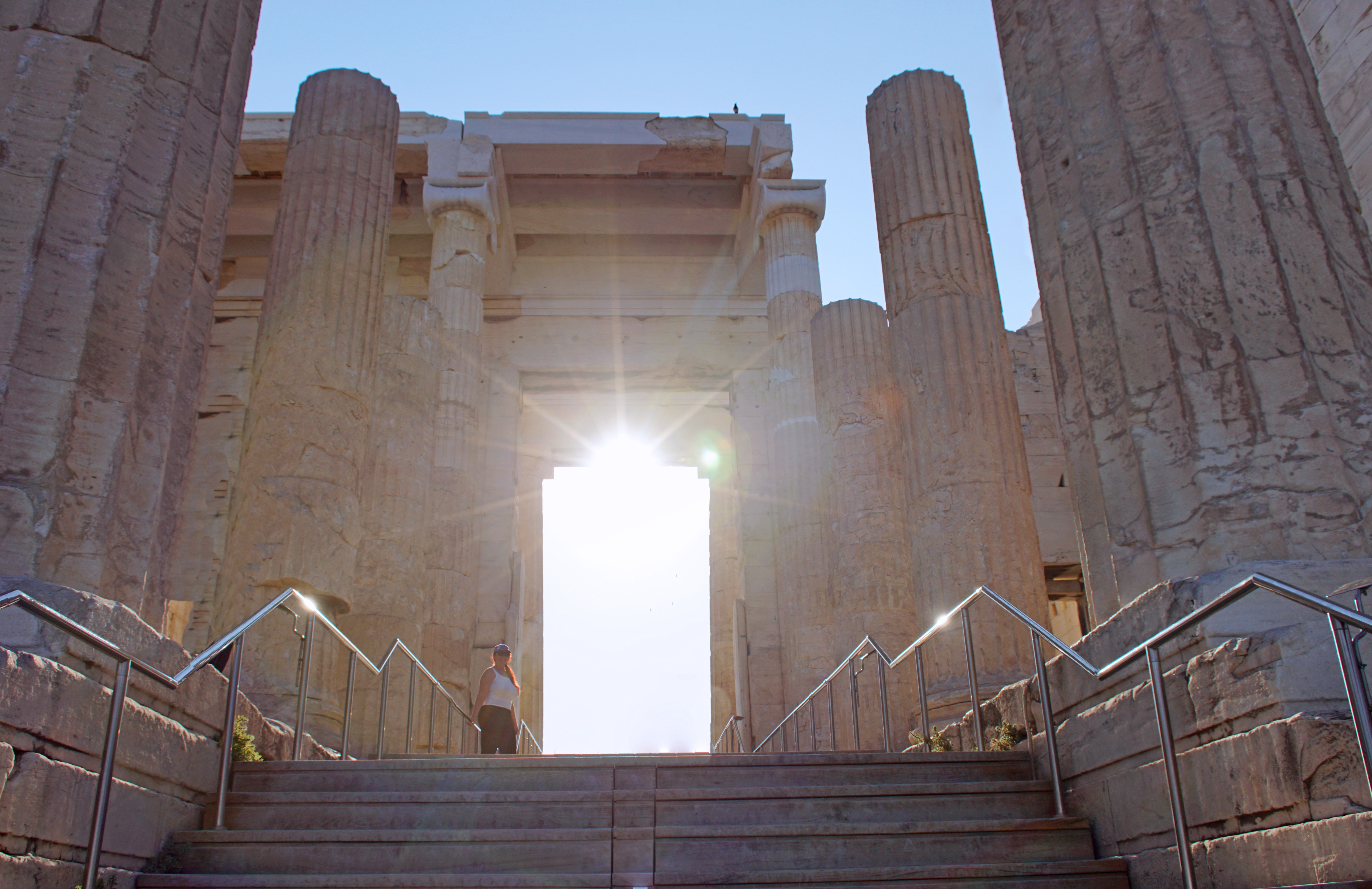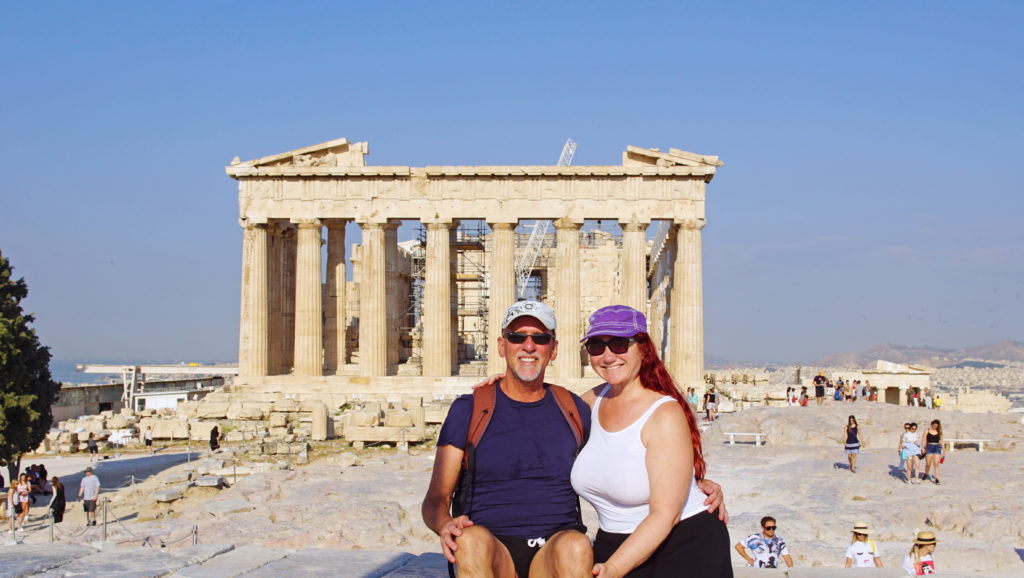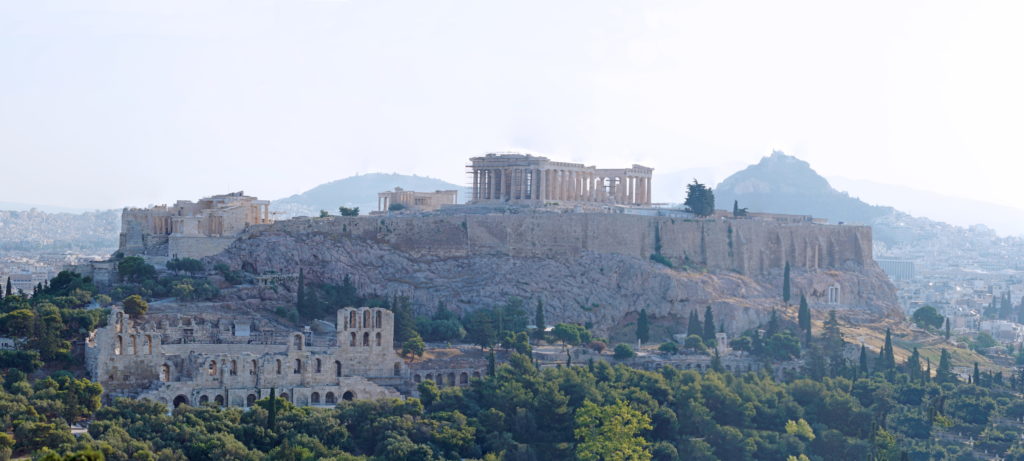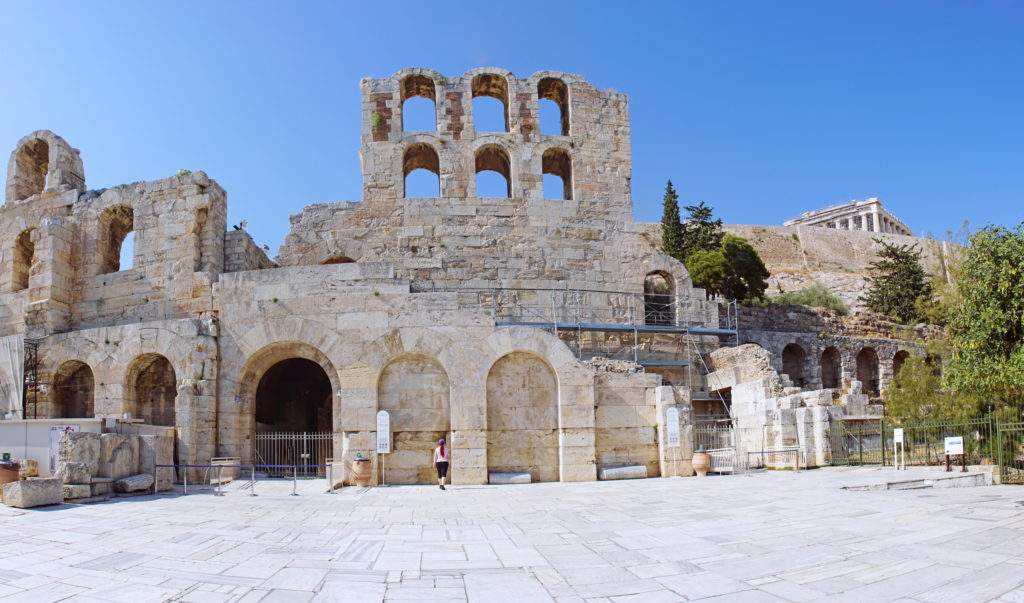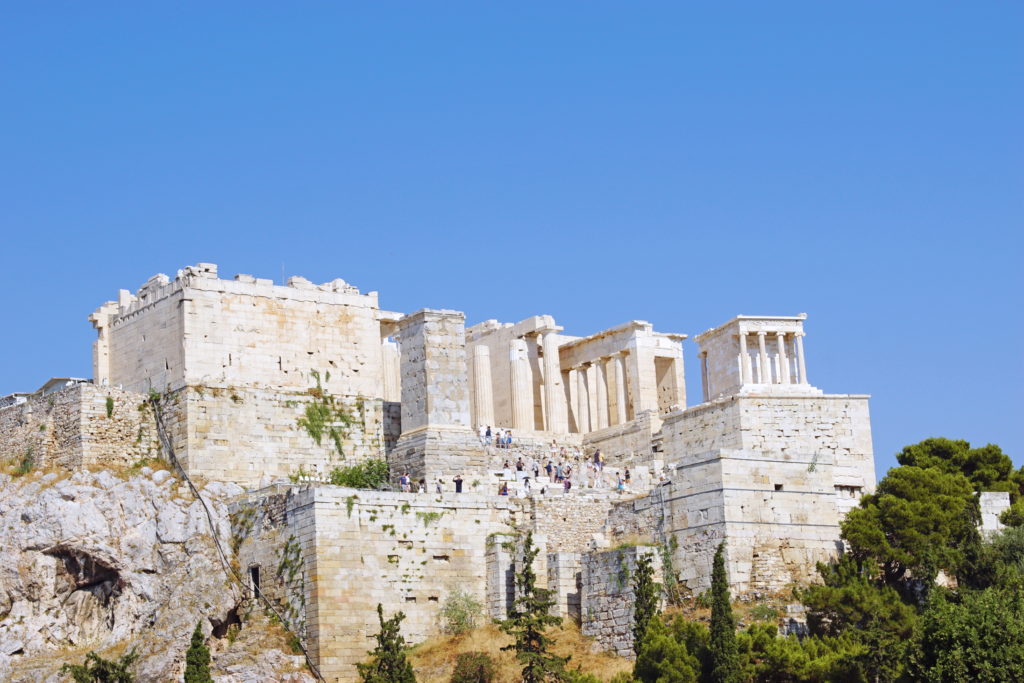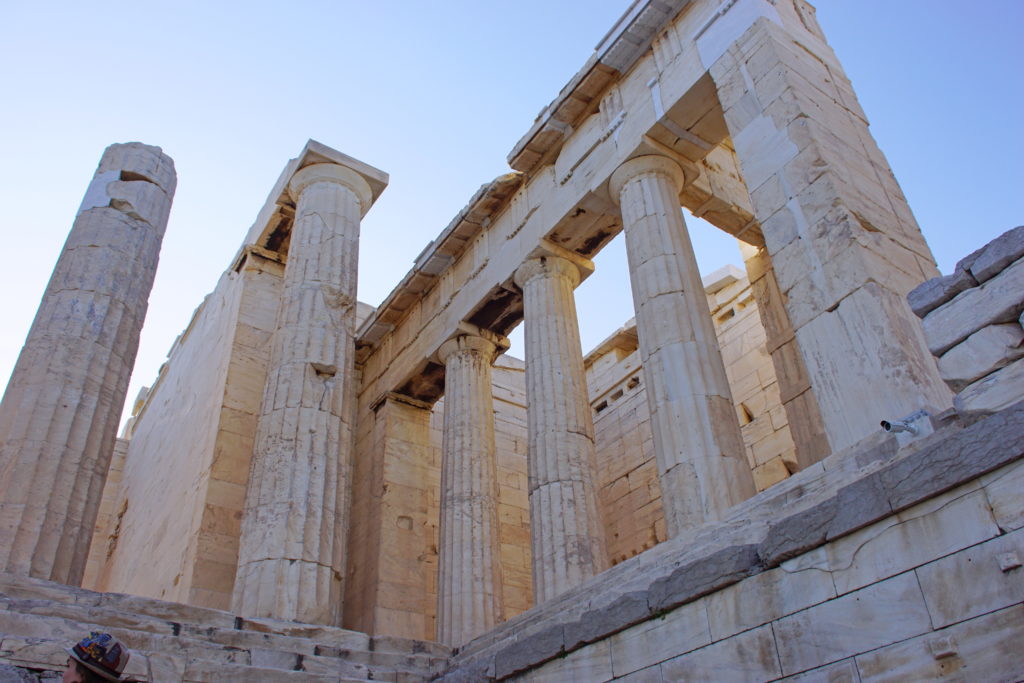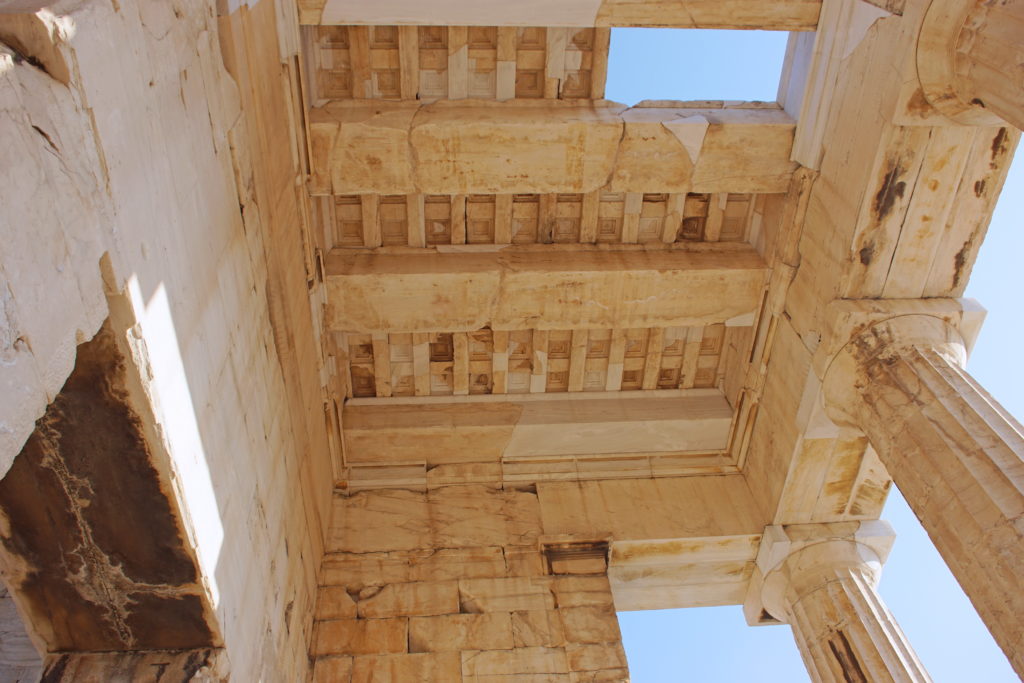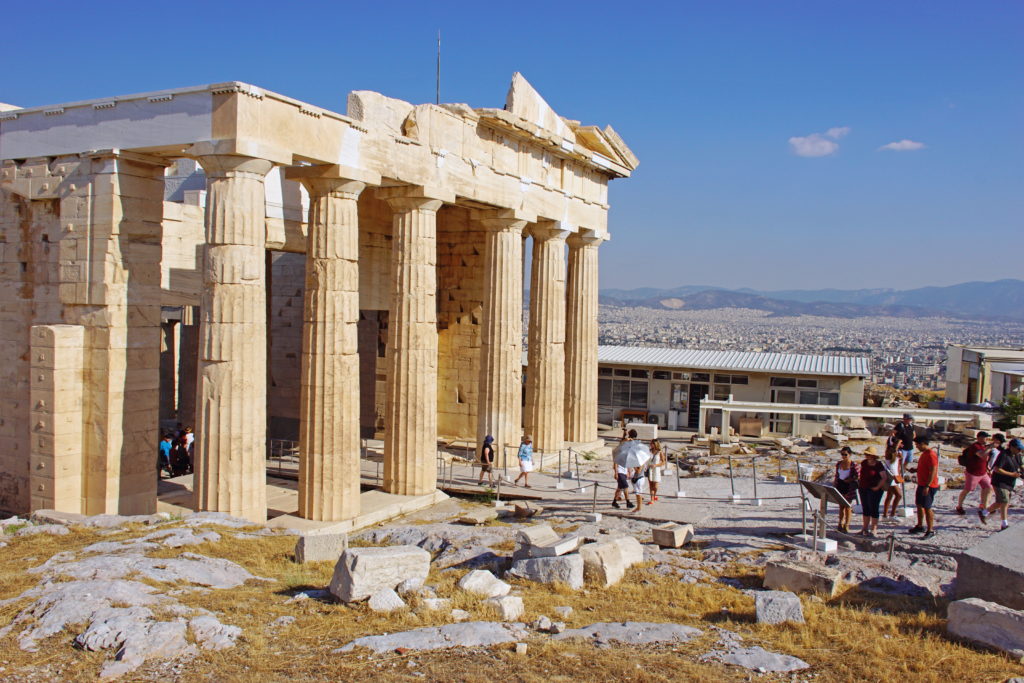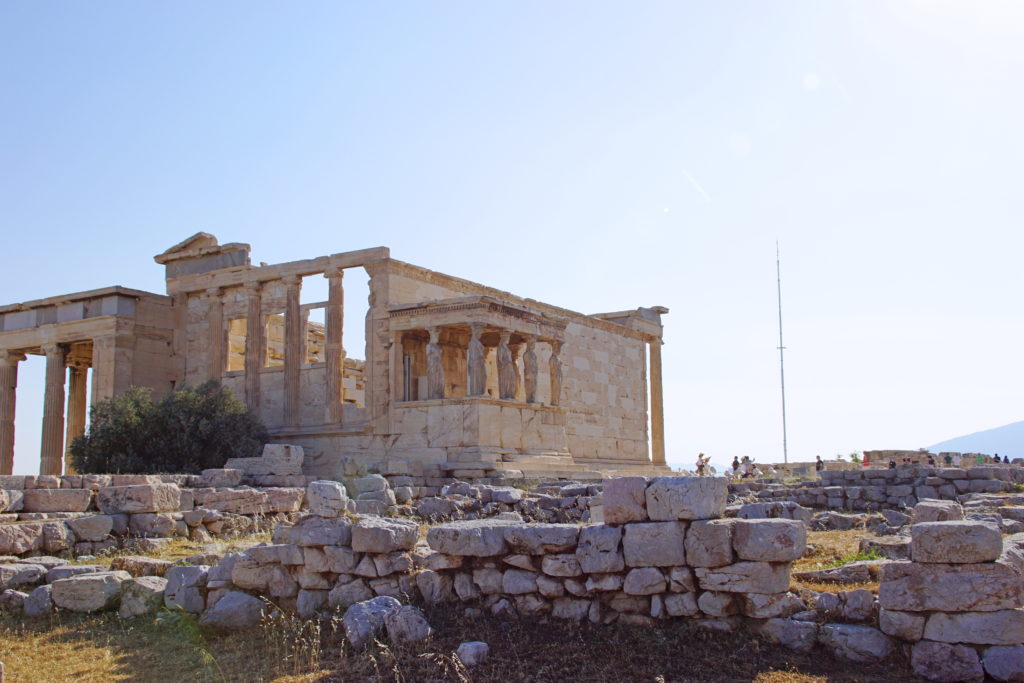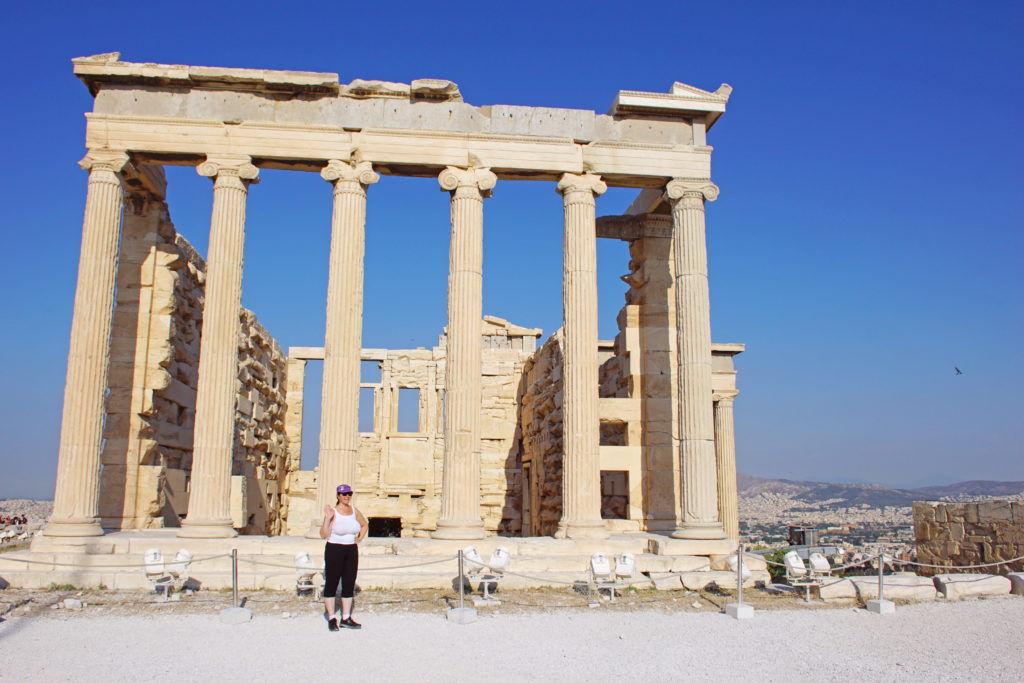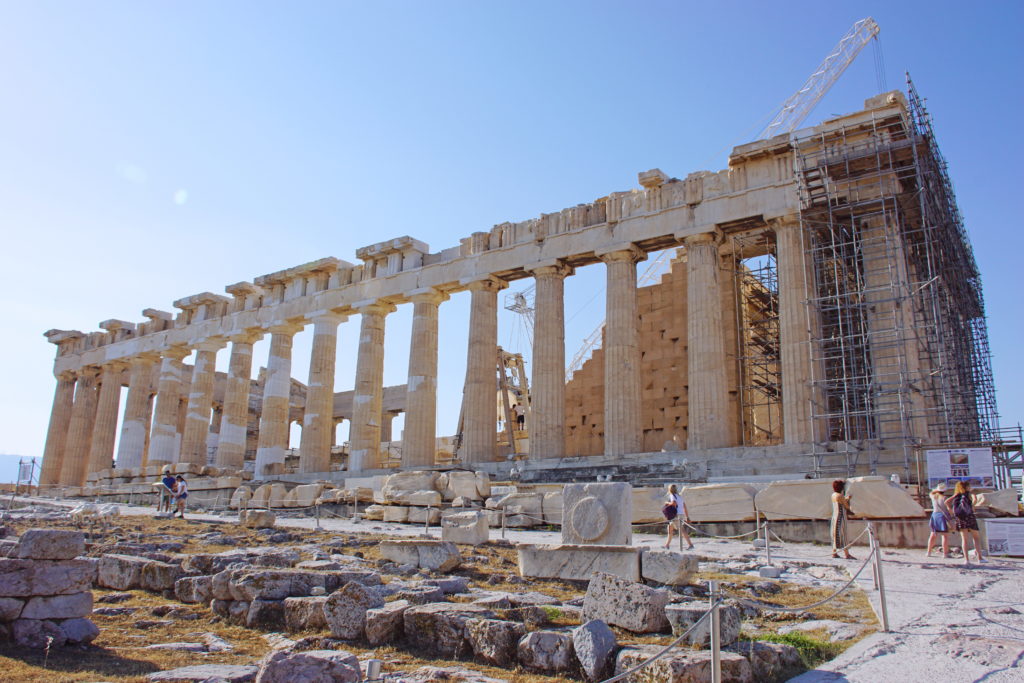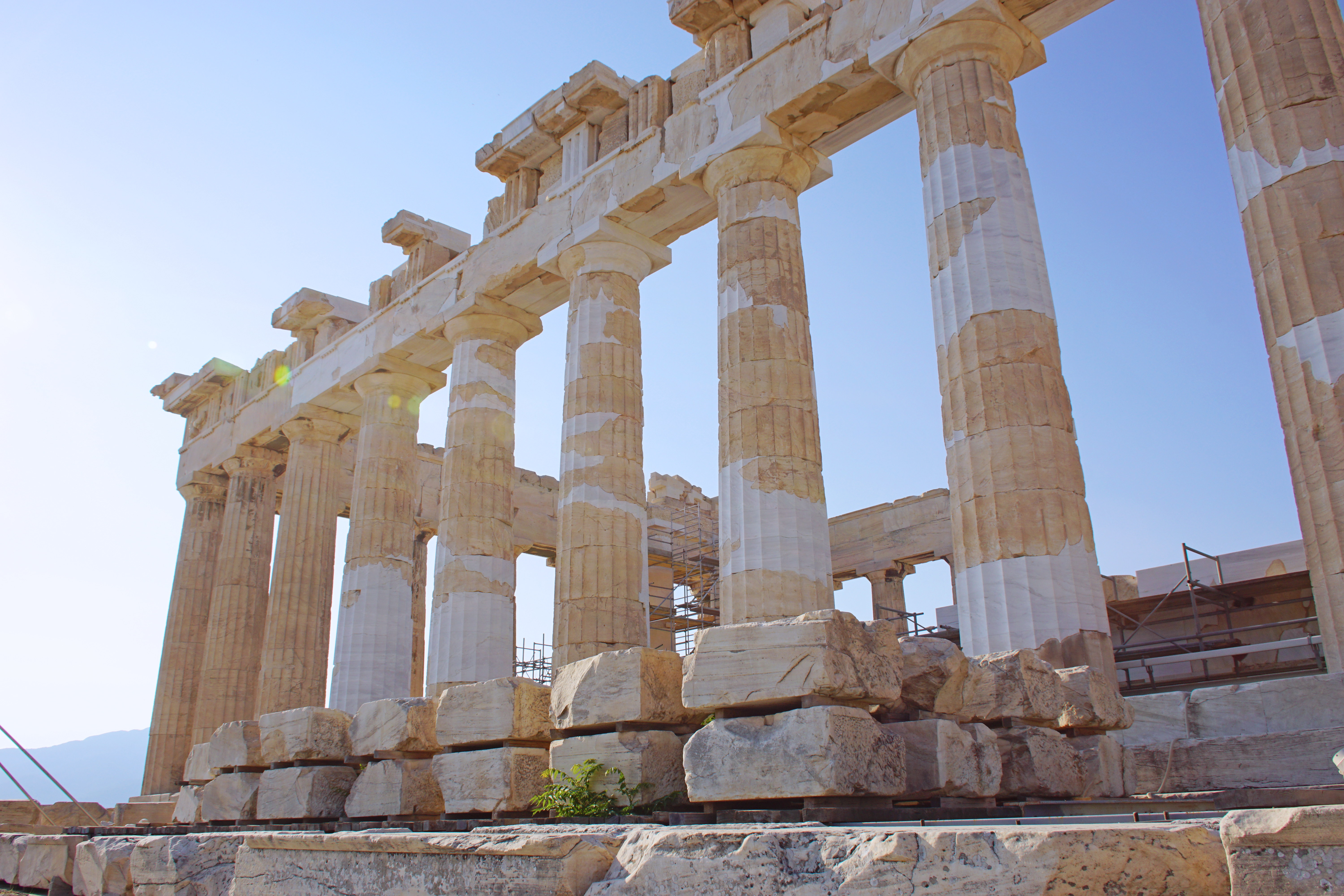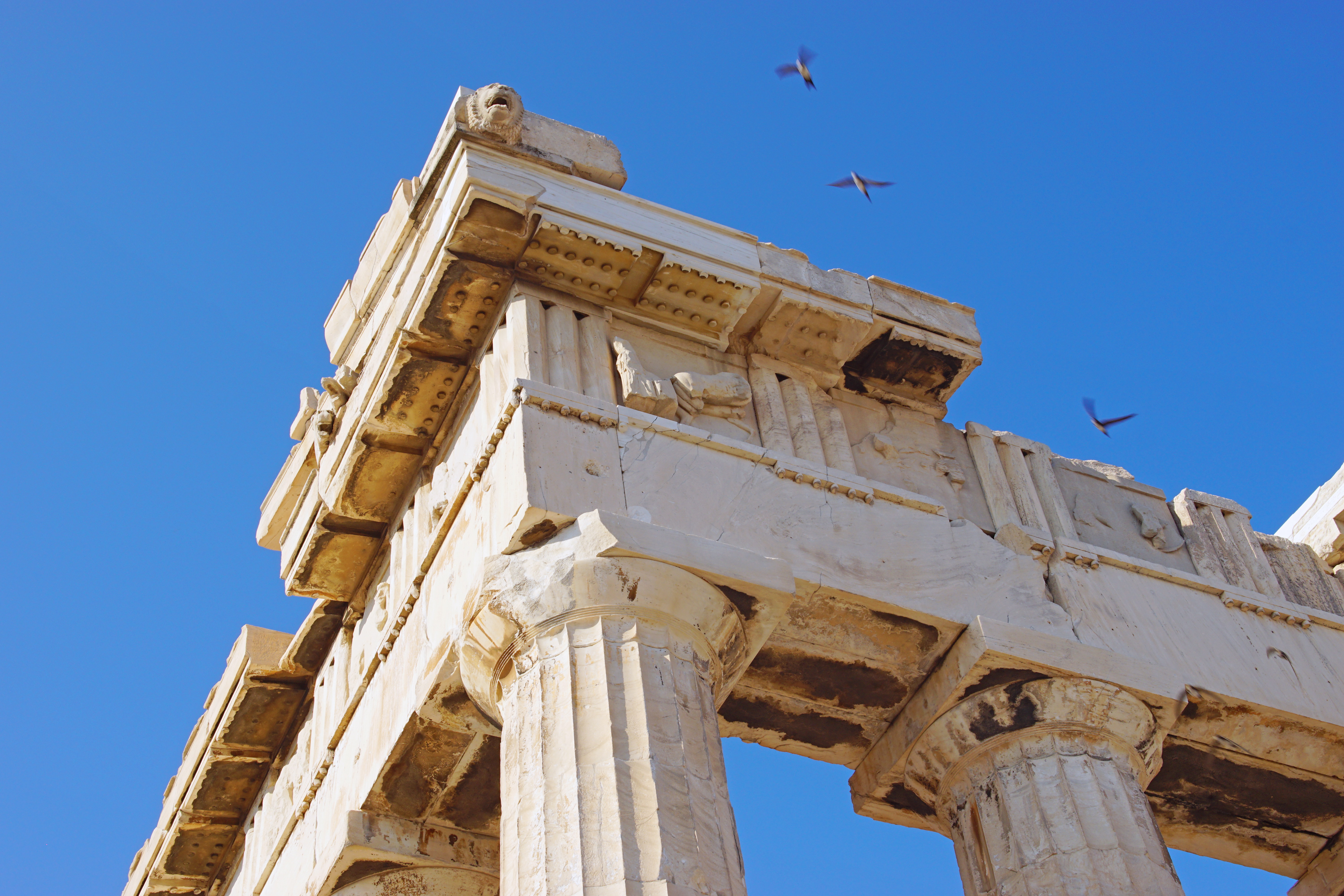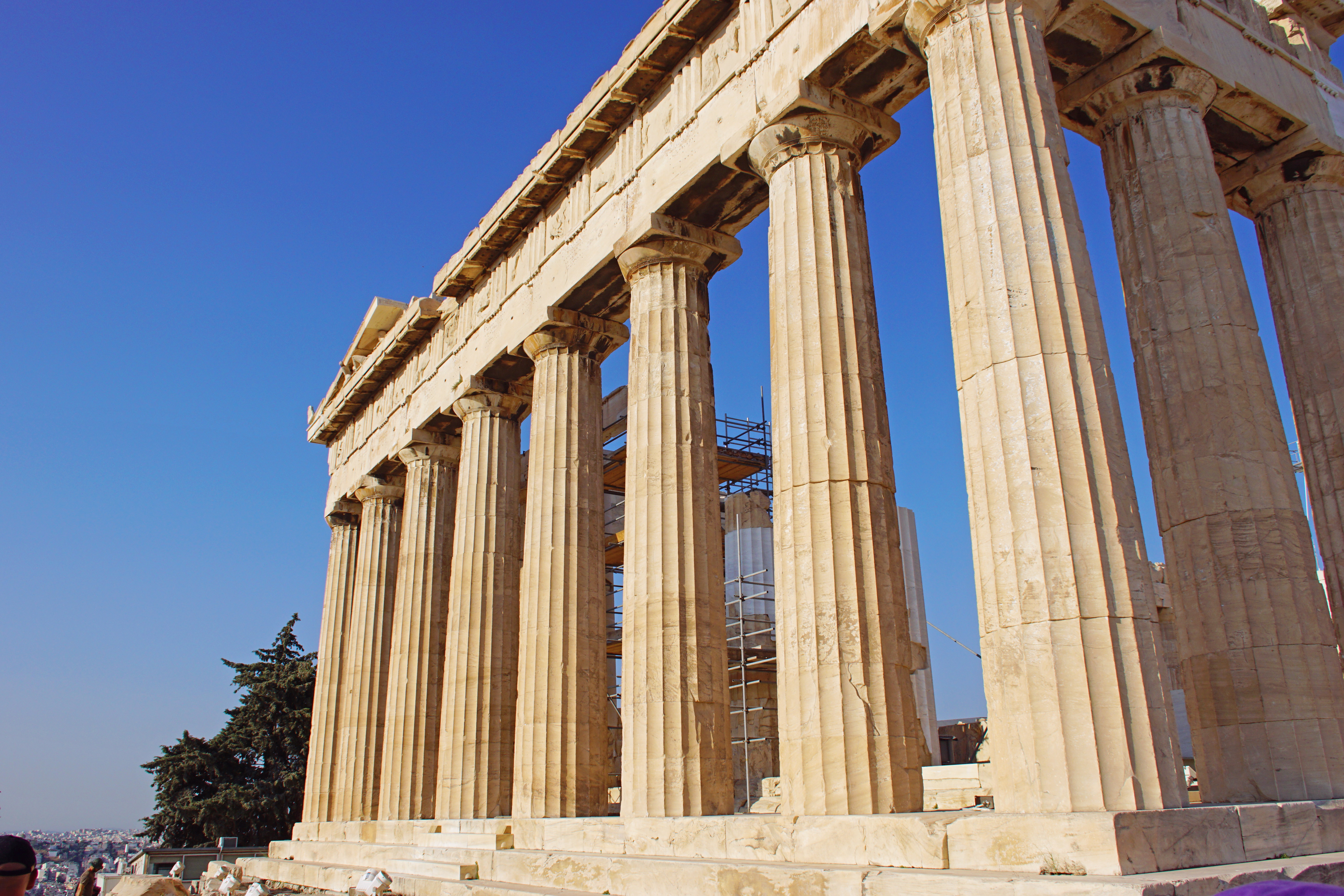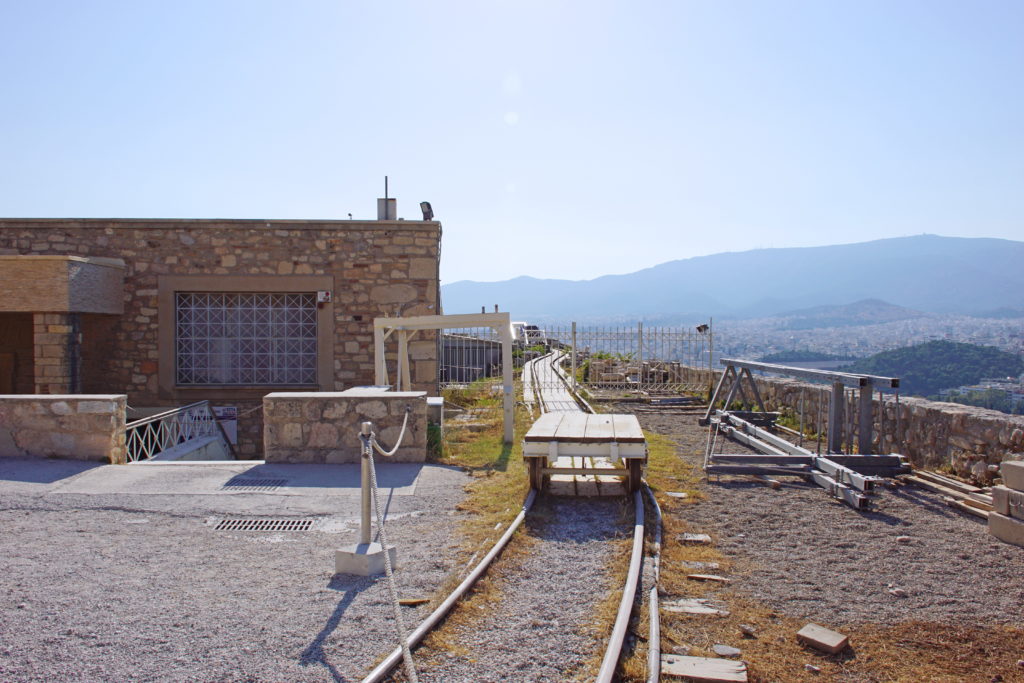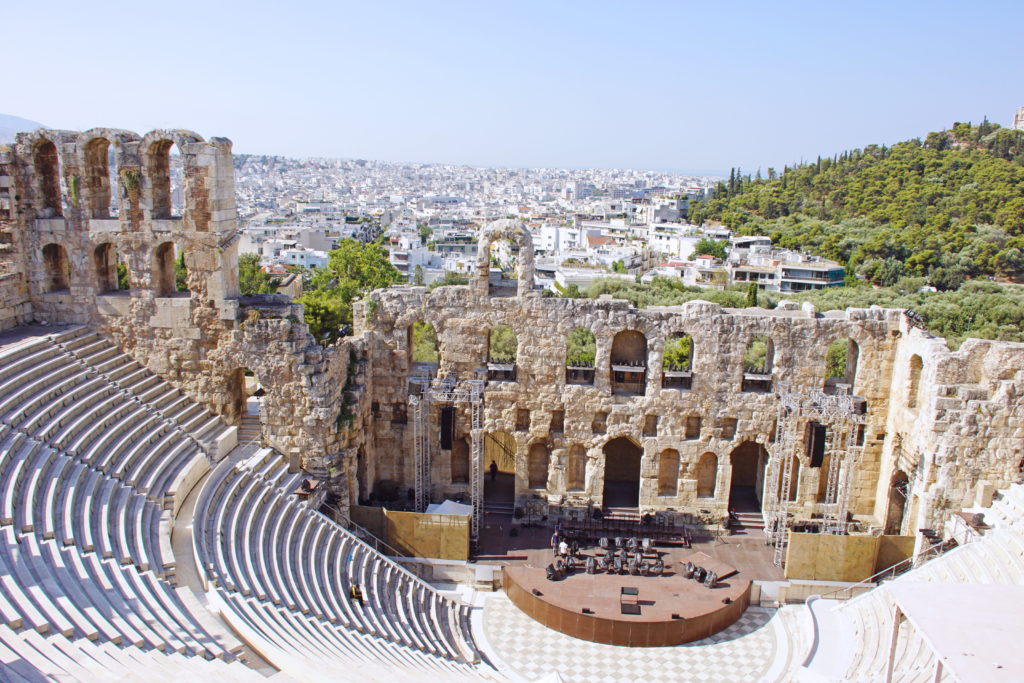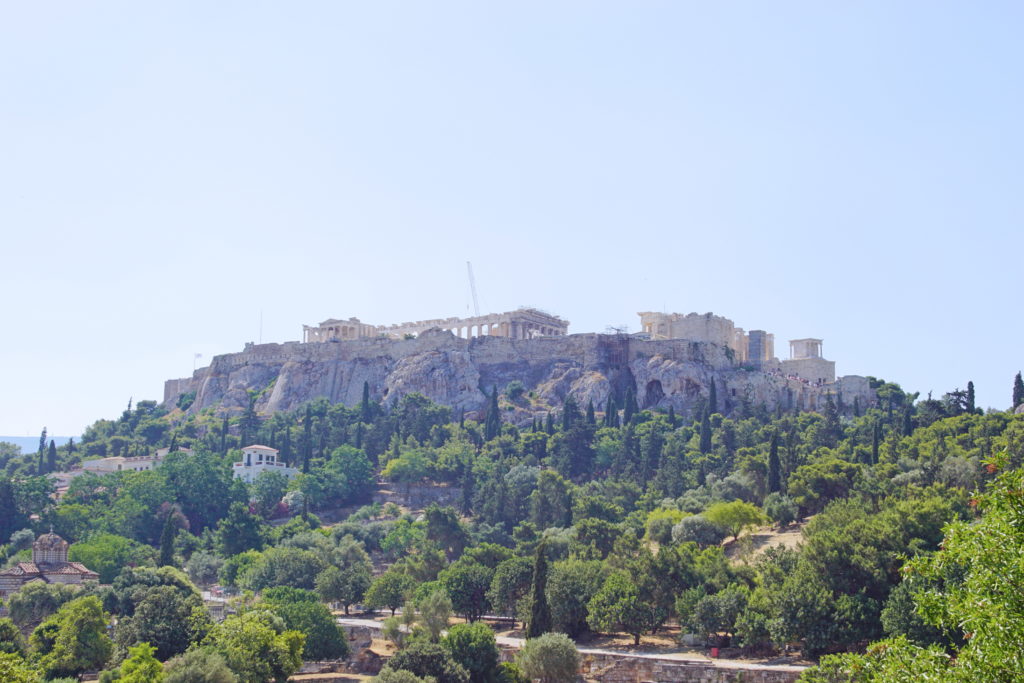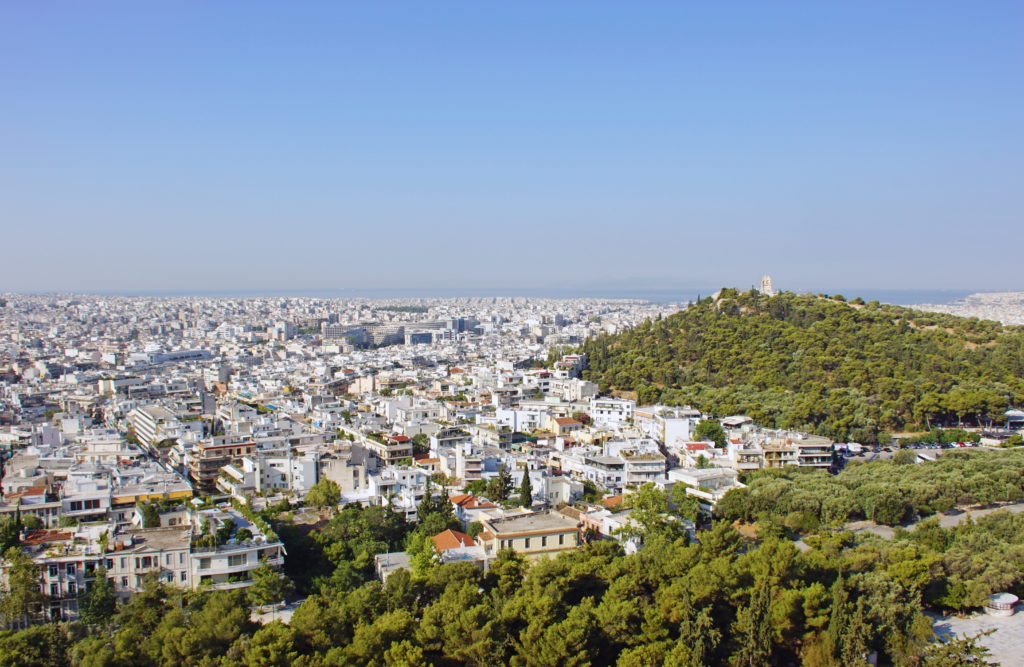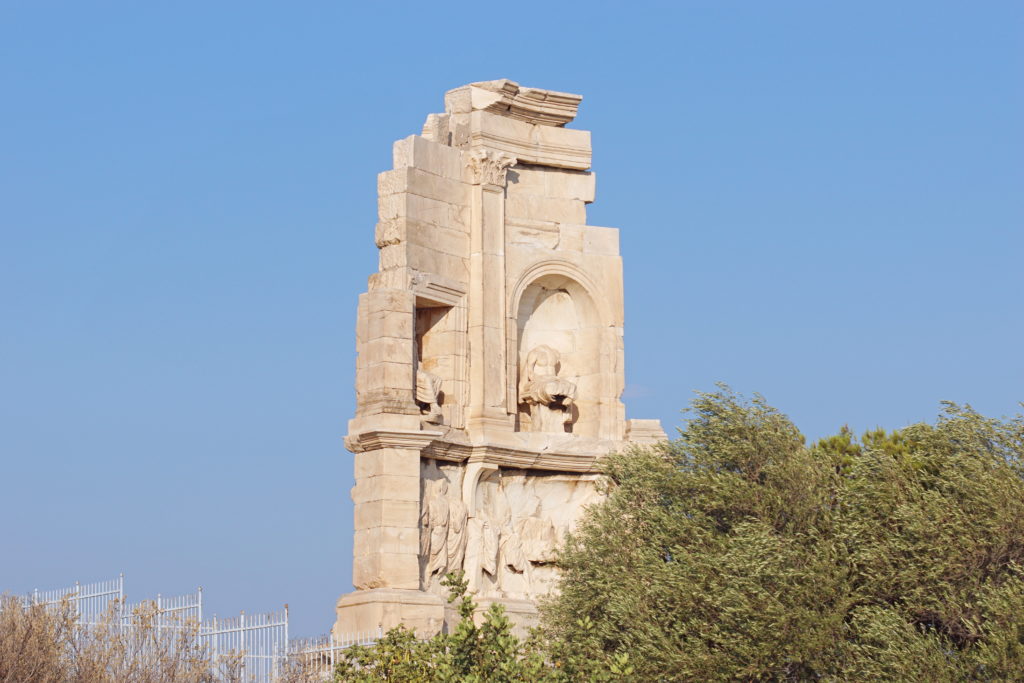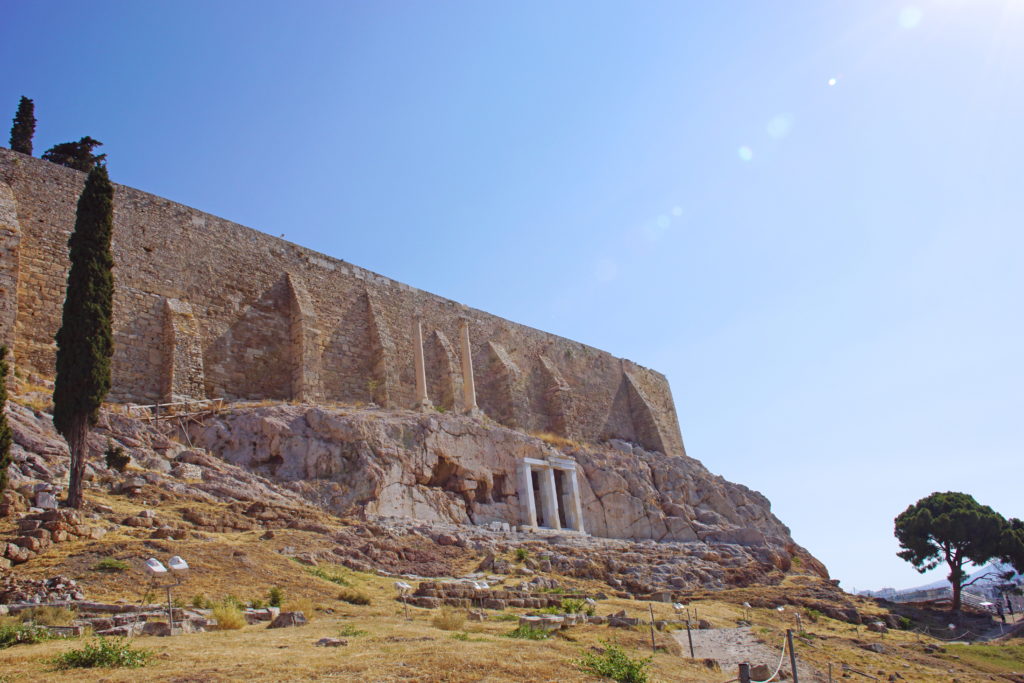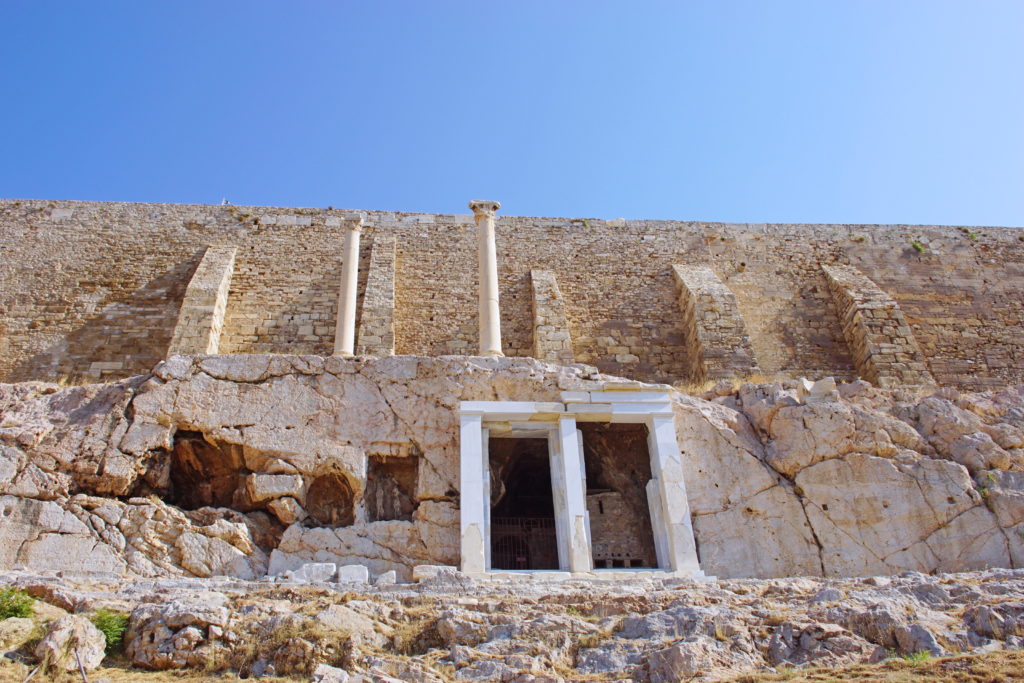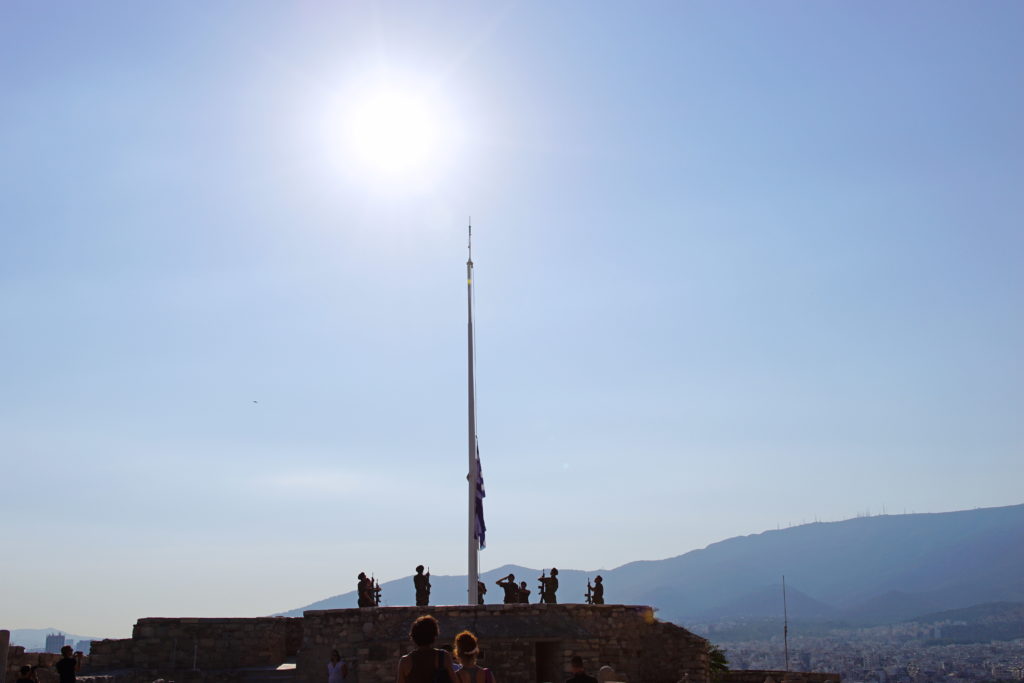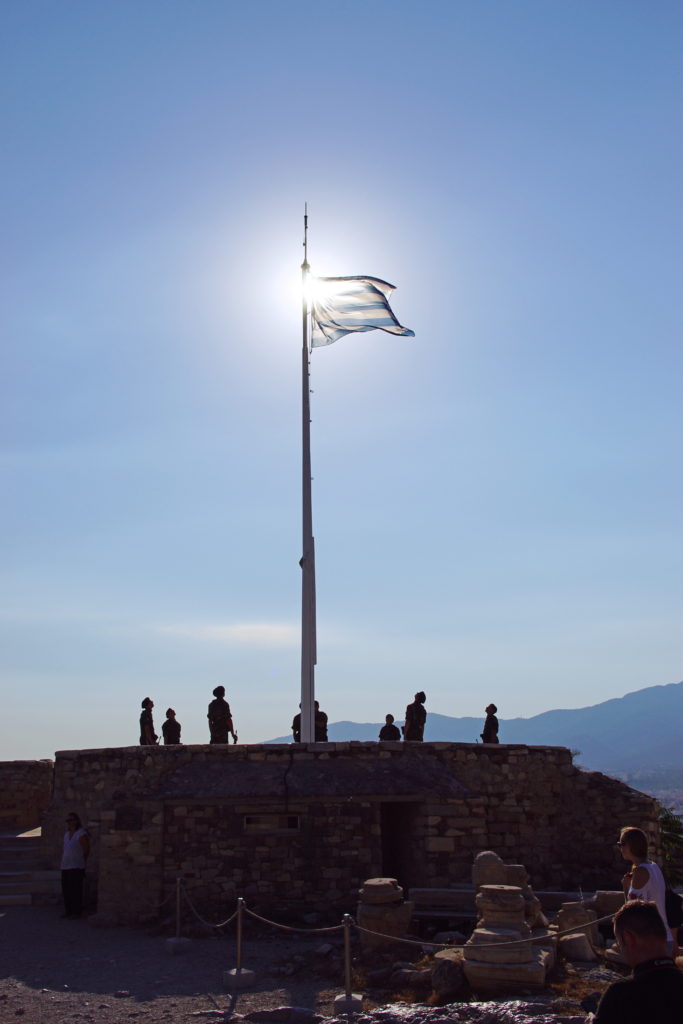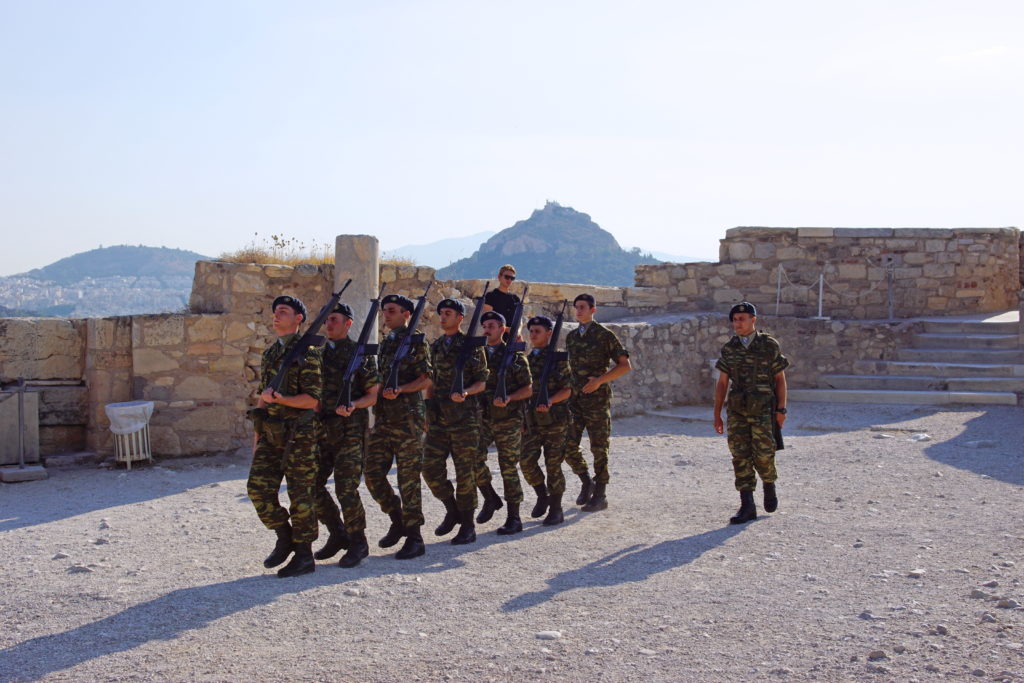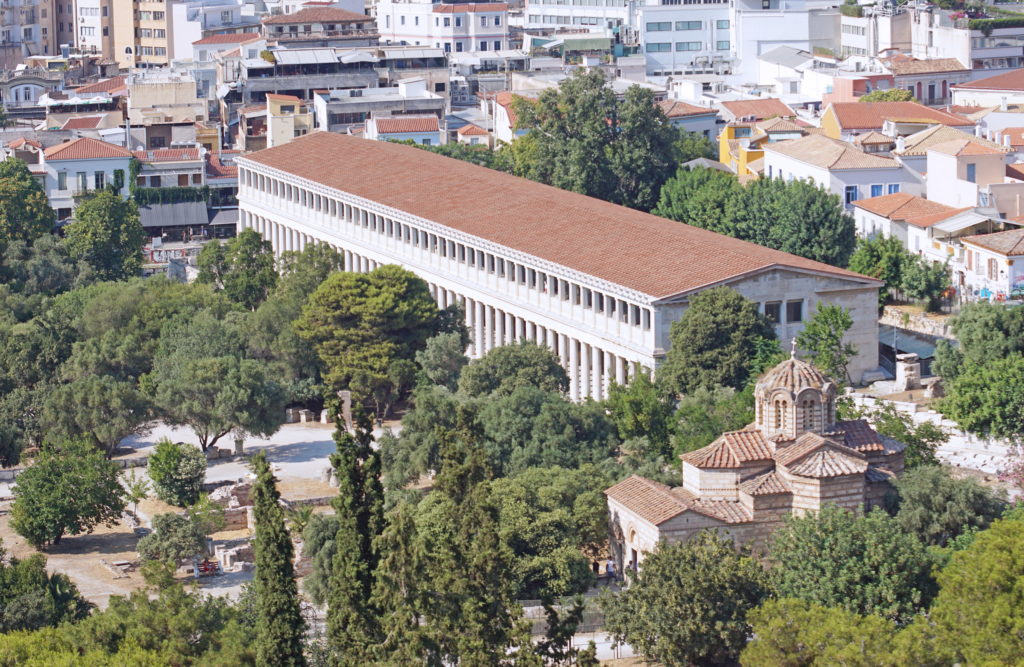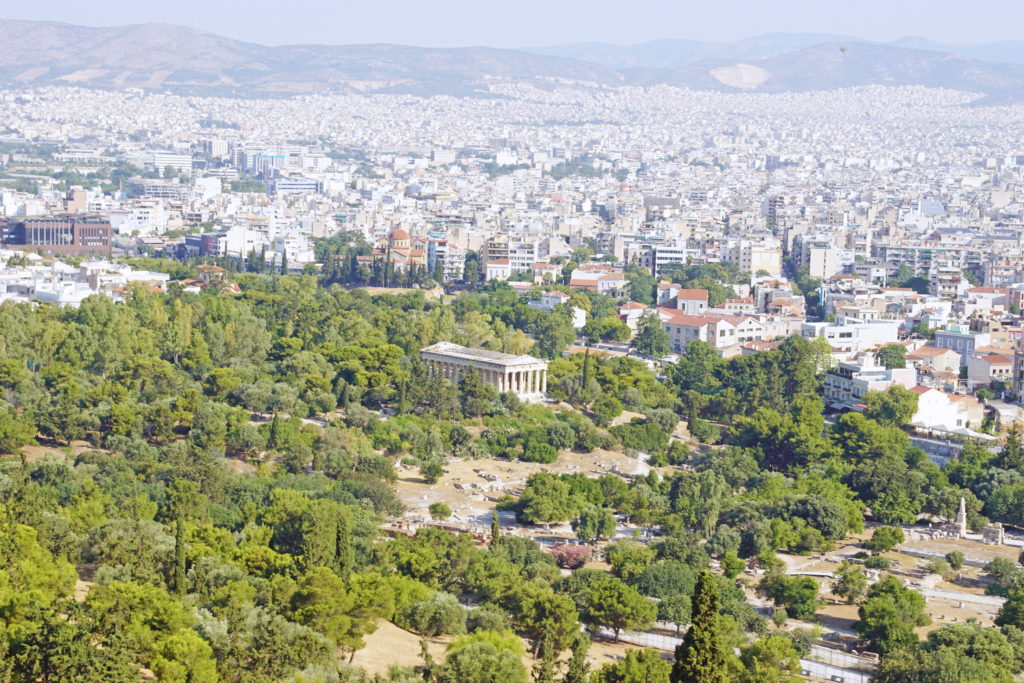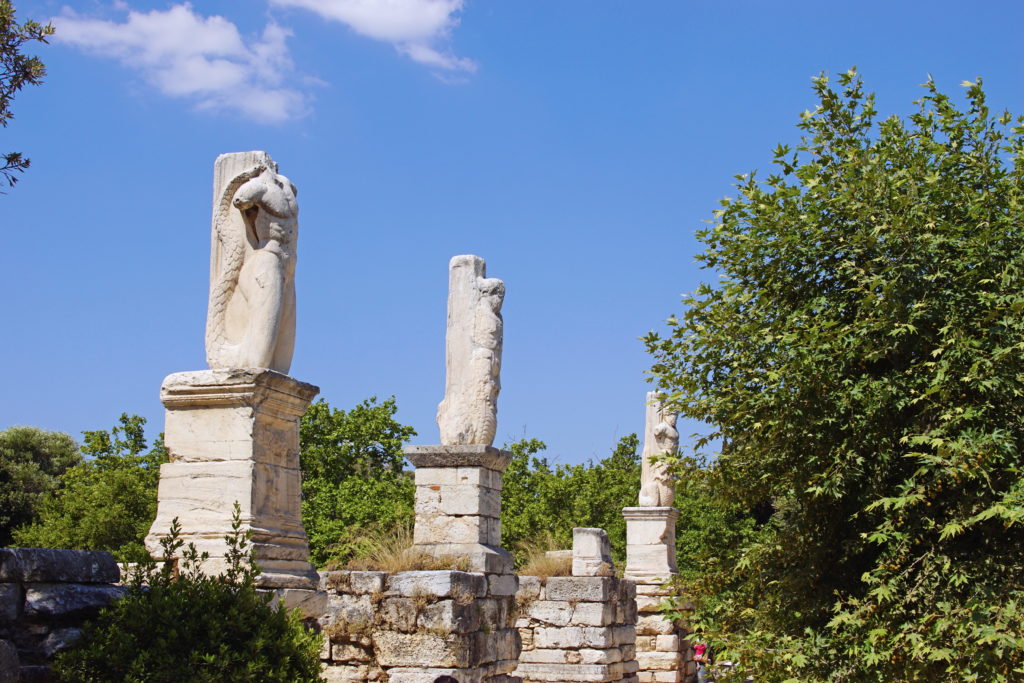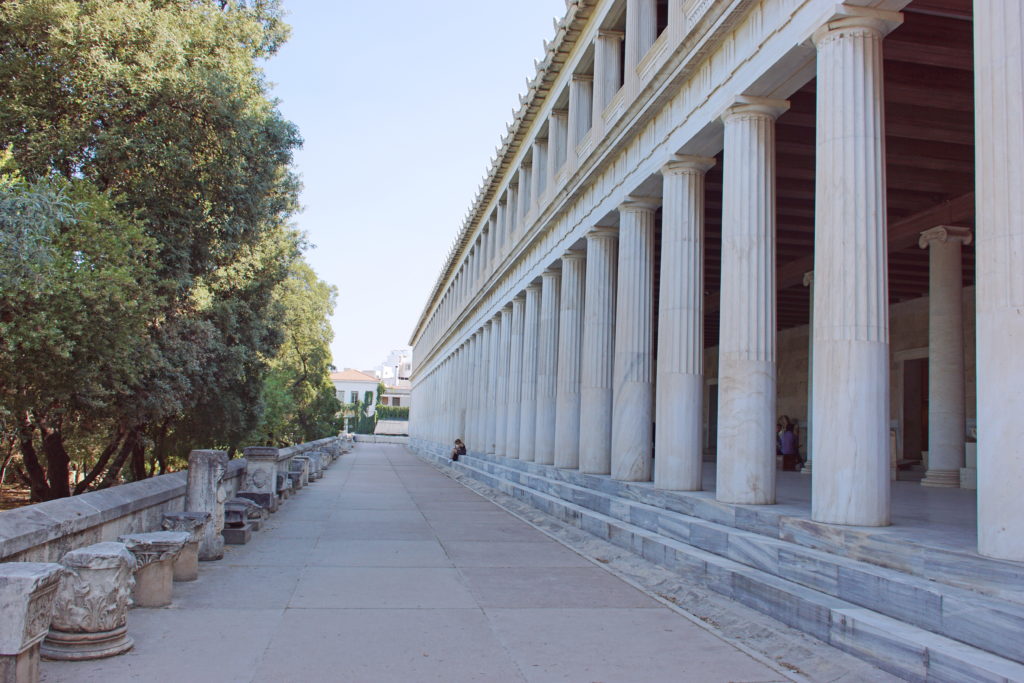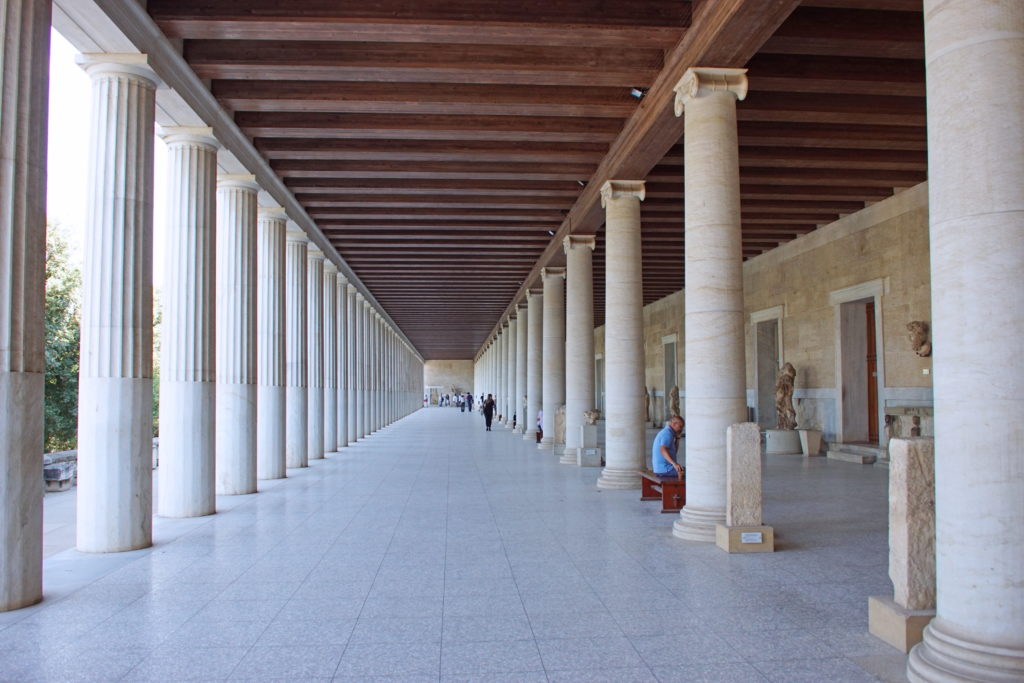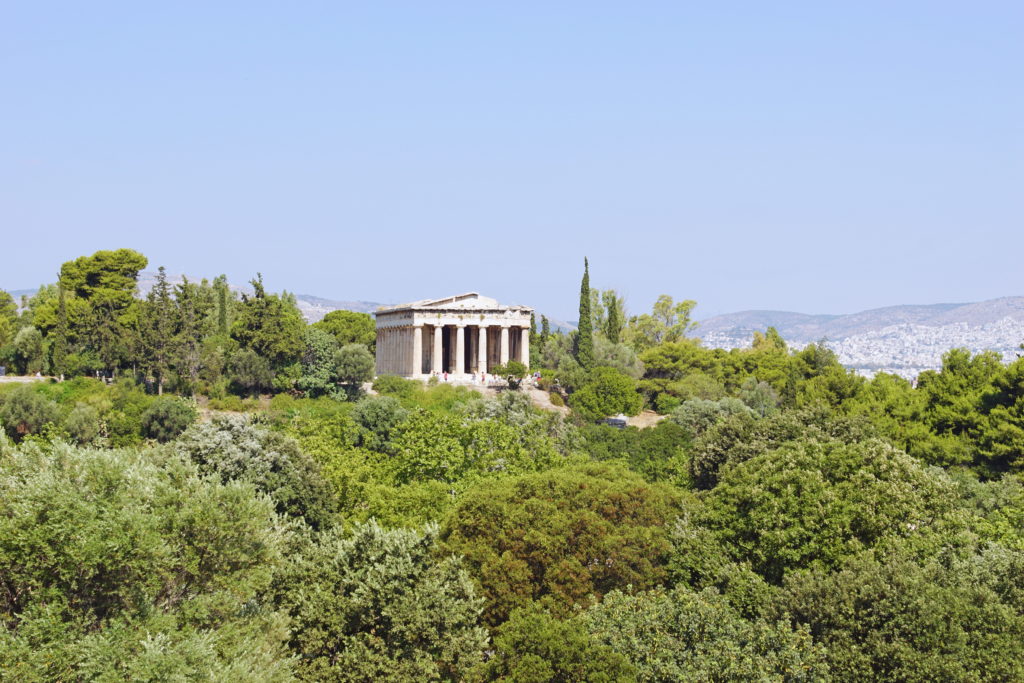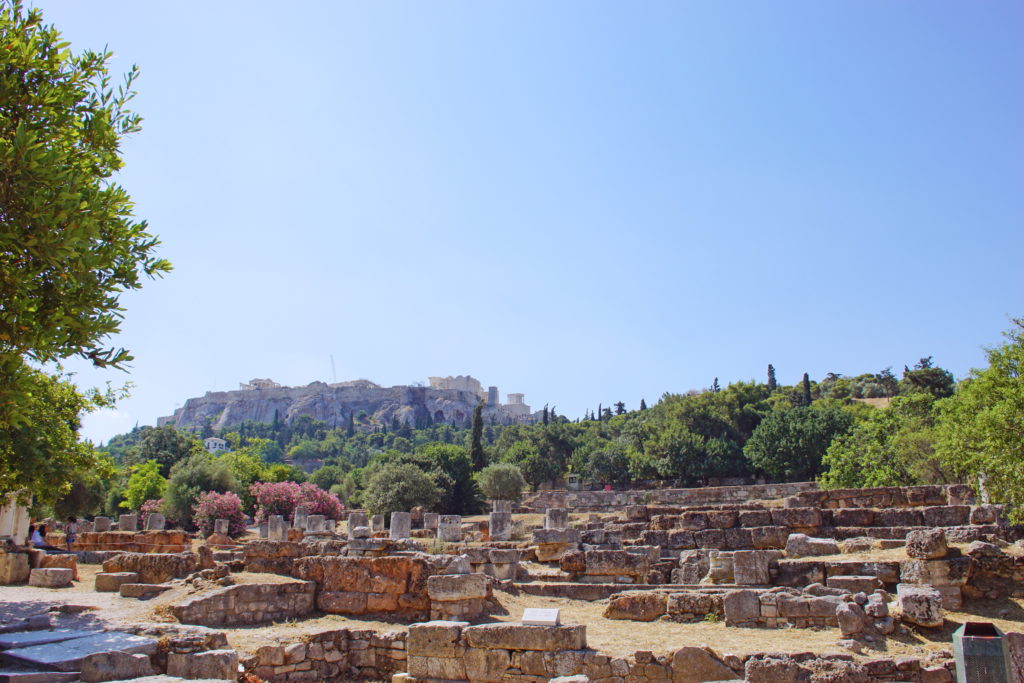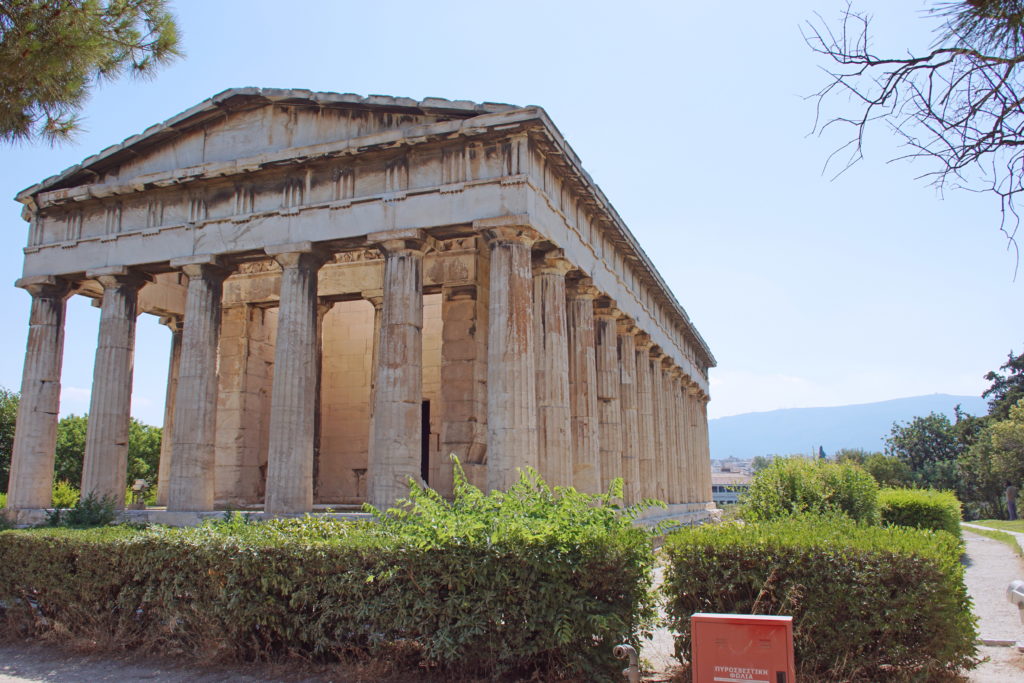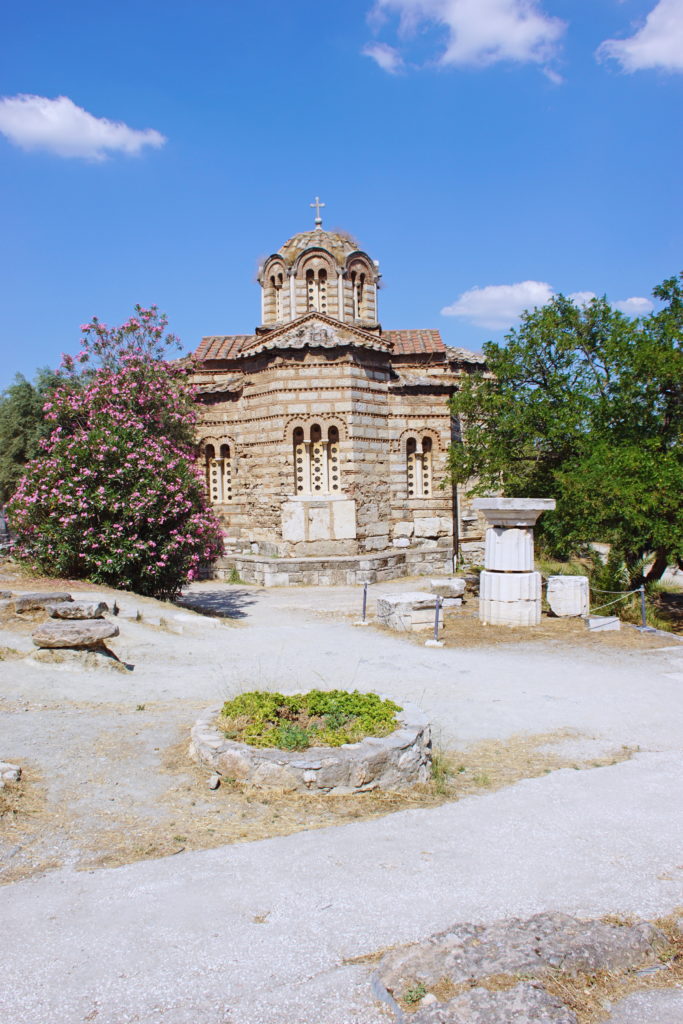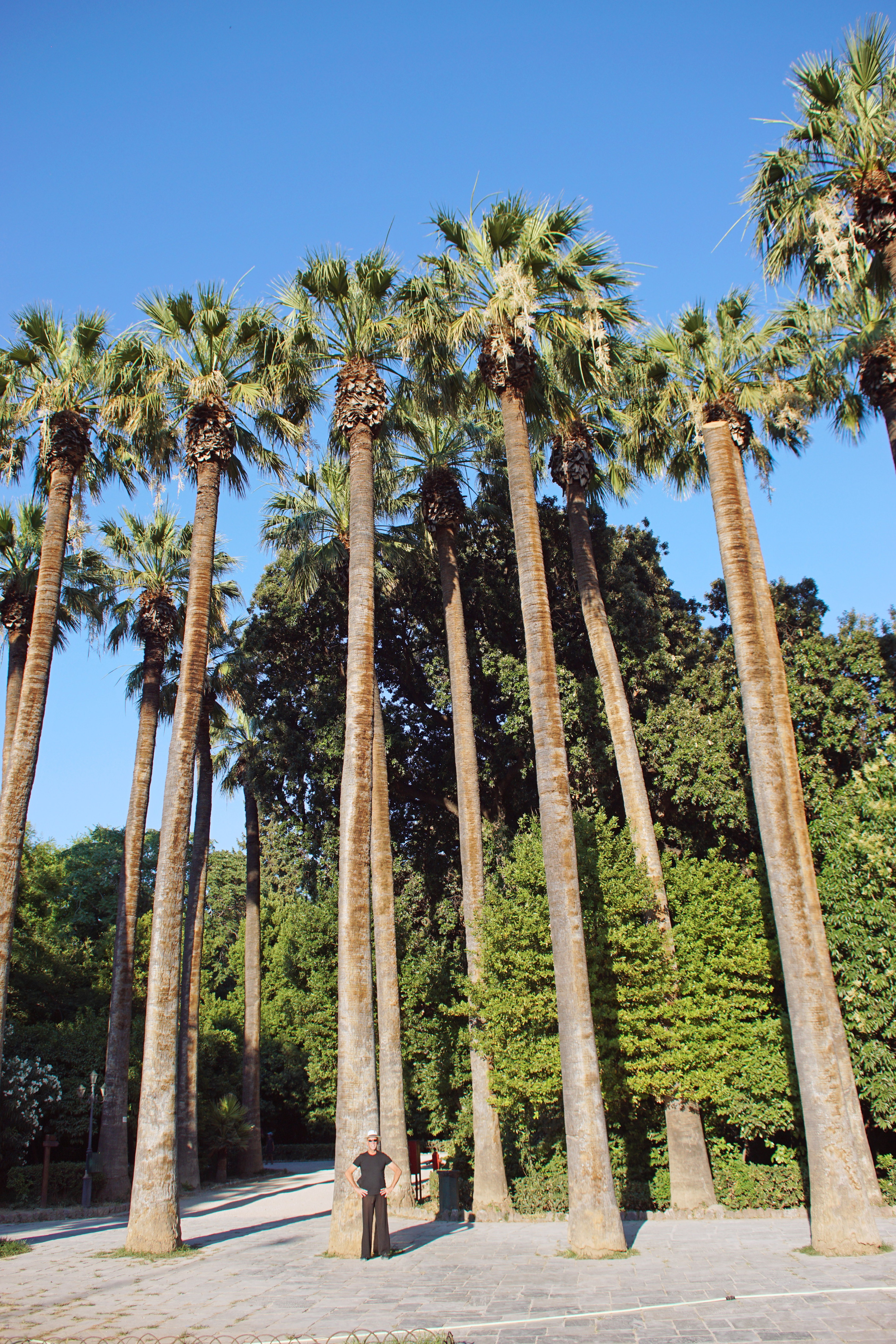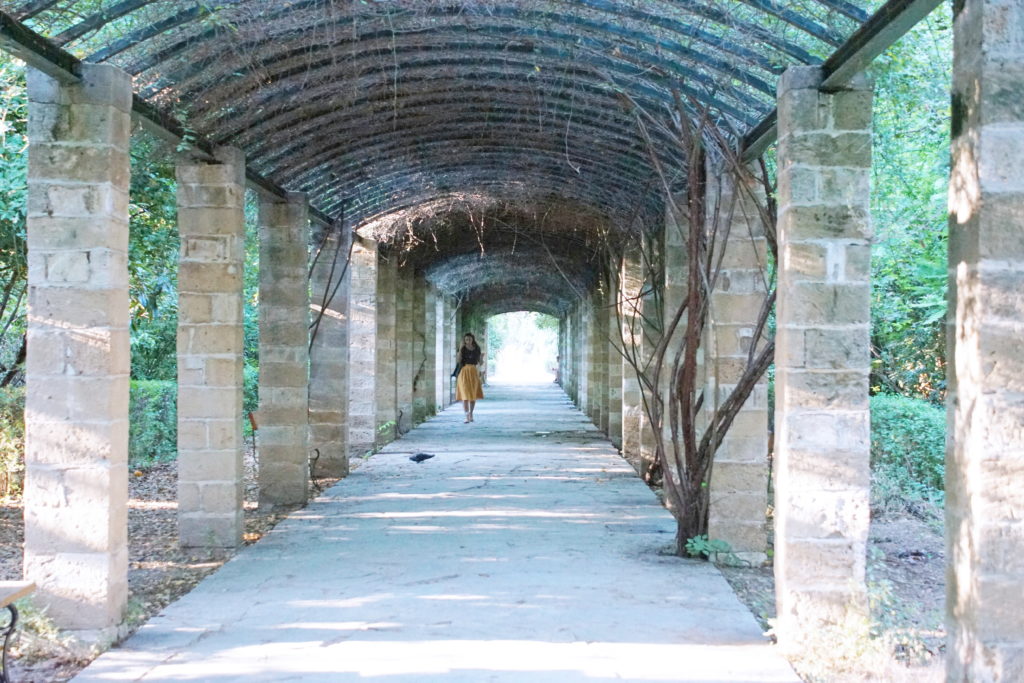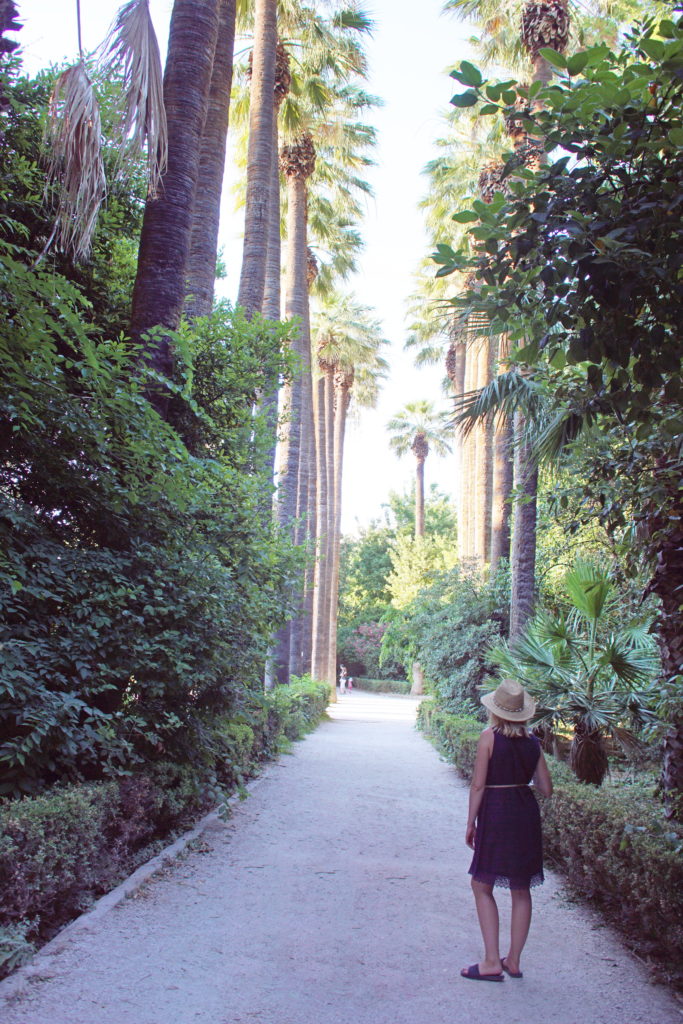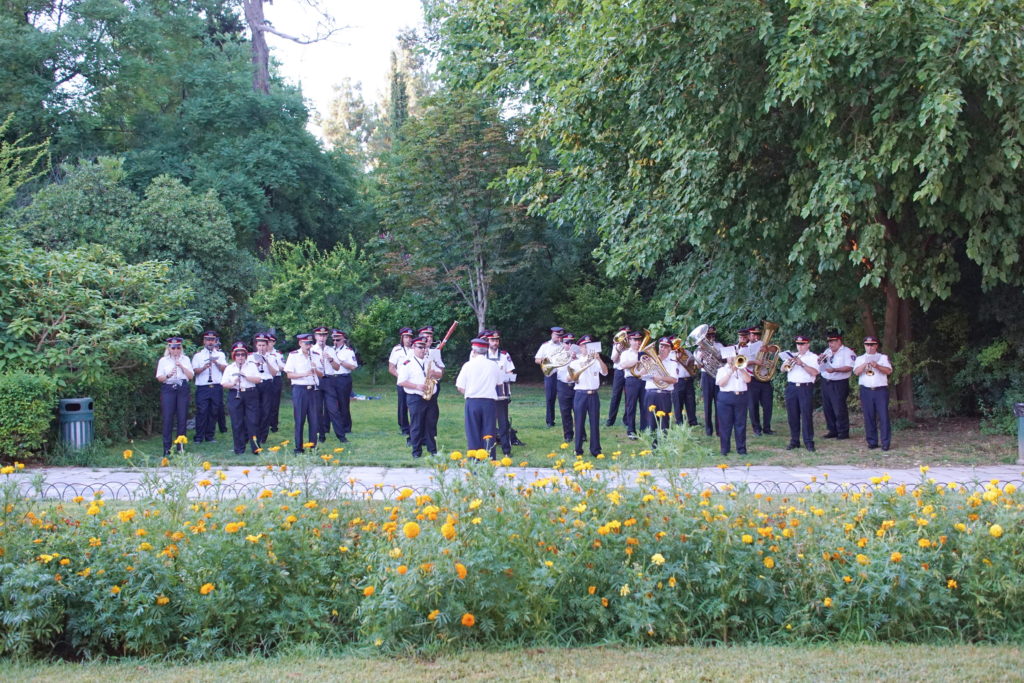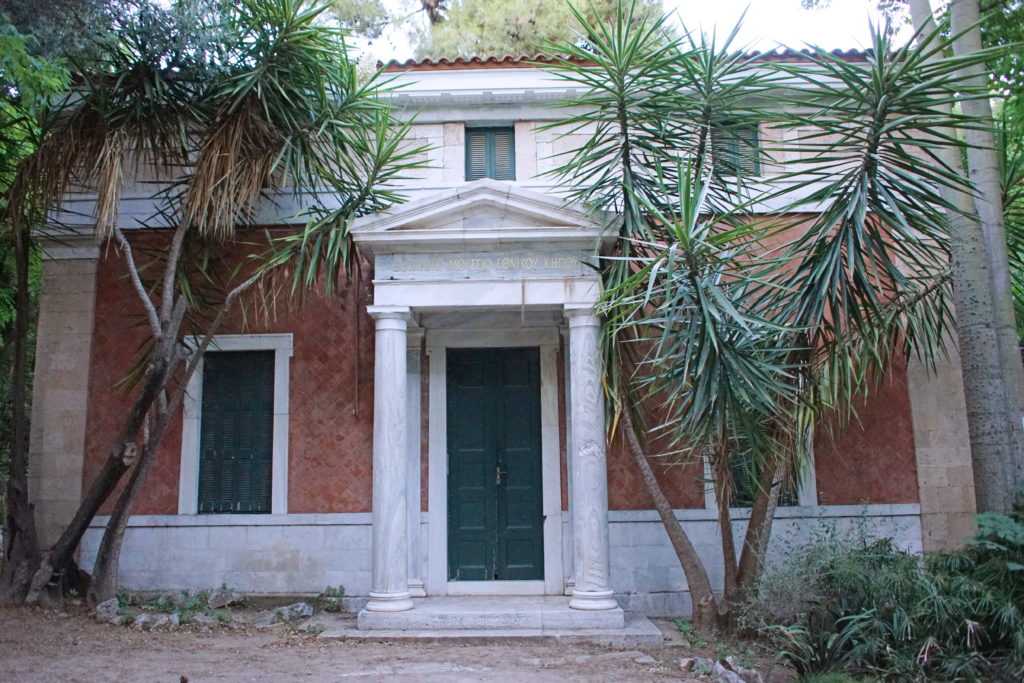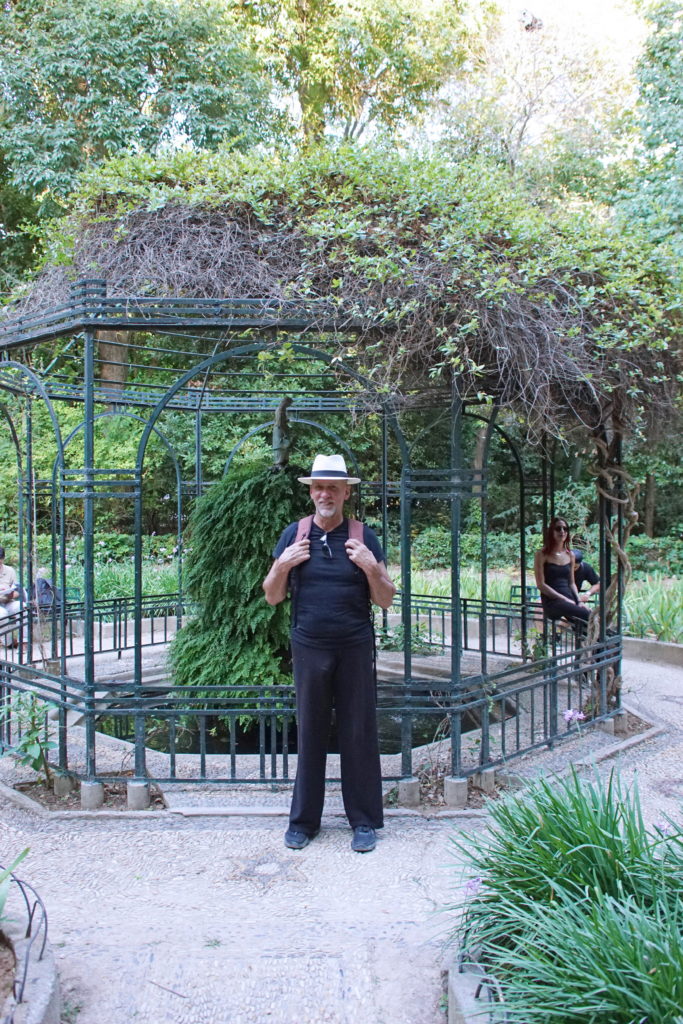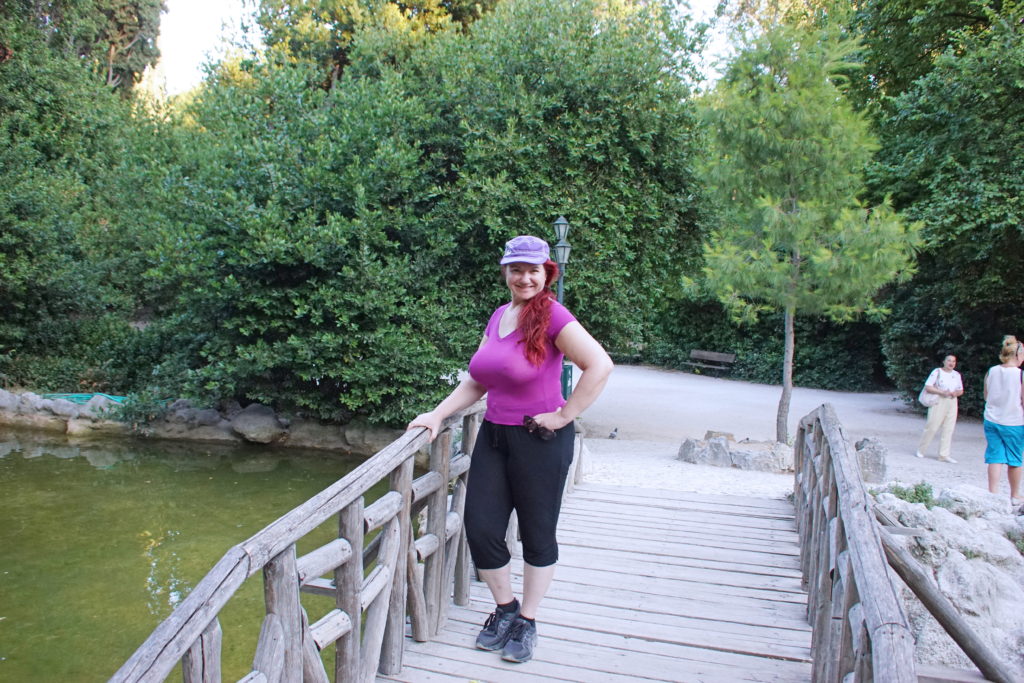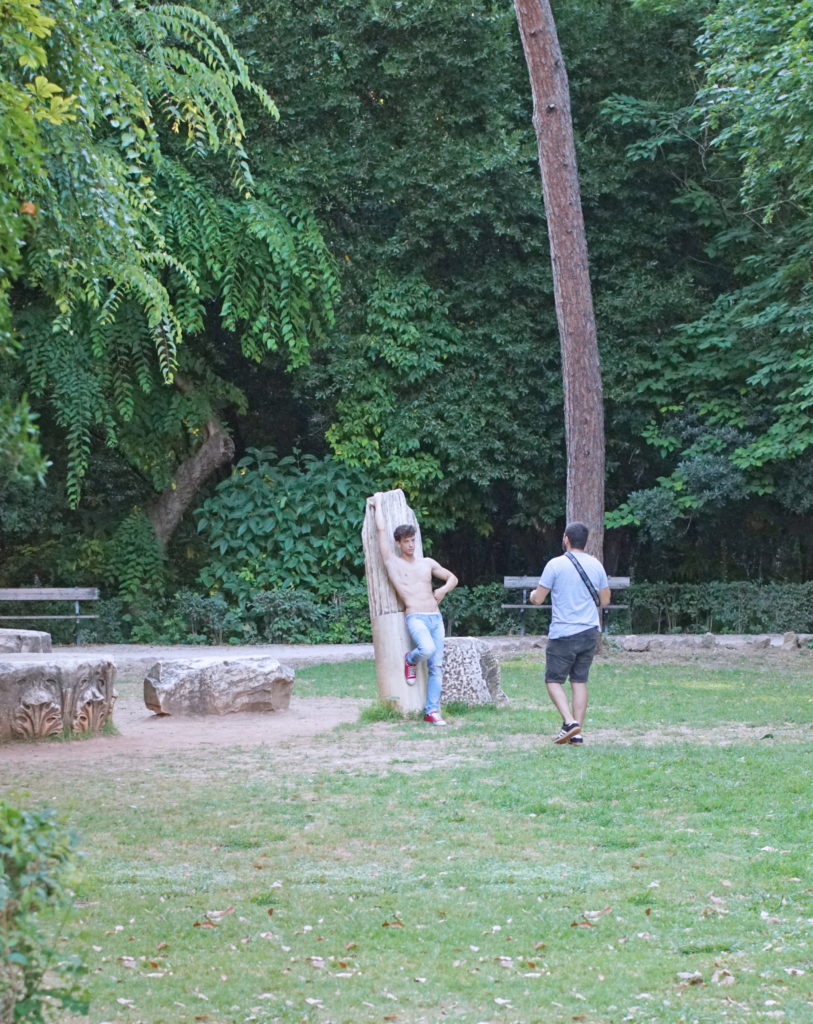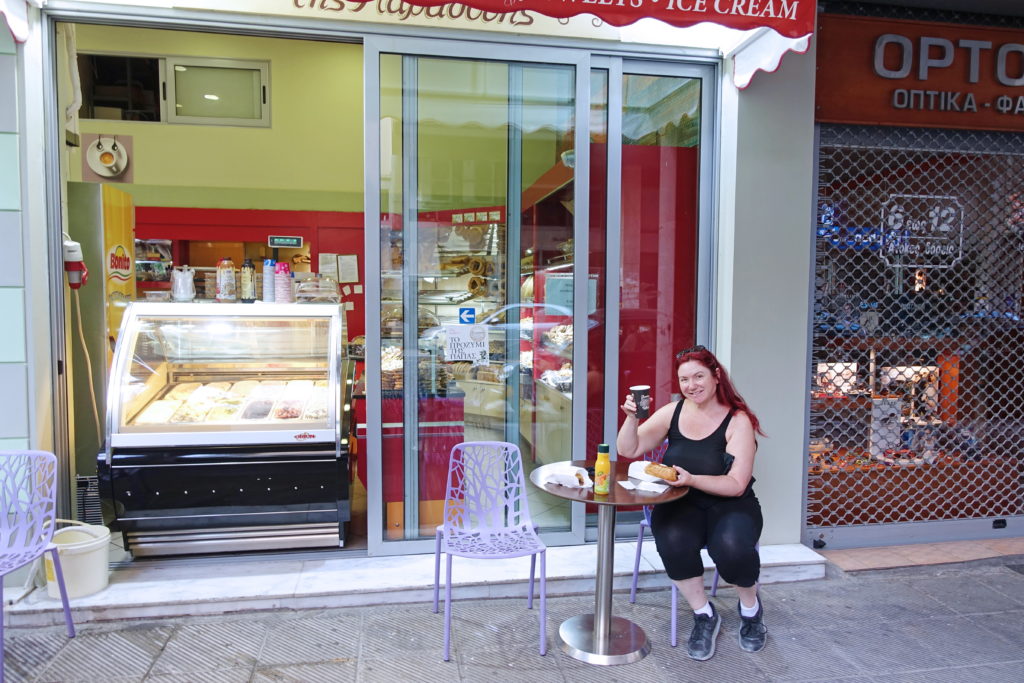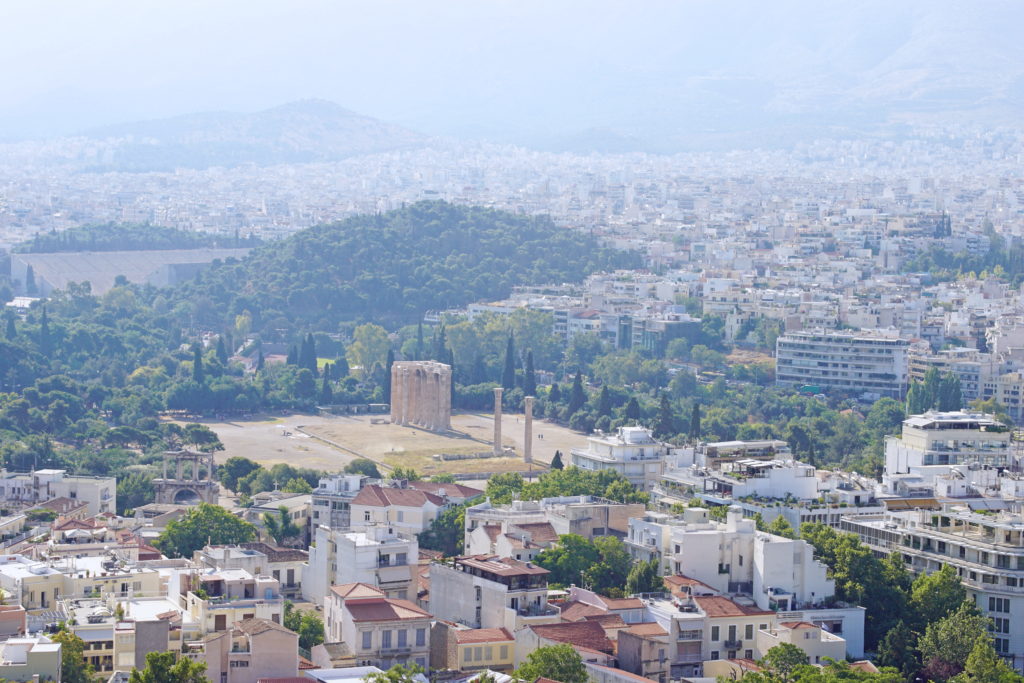Here we are in Athens, Hellenic Republic, for just two days, which doesn’t give us to much time for adventure, but we are going to do our best! 😎
Cleverly, we are staying in an Airbnb that is walking distance from the Acropolis, so that’s first on our agenda.
Acropolis
The Acropolis of Athens is an ancient citadel located on a rocky outcrop above the city of Athens and contains the remains of several ancient buildings of great architectural and historic significance, the most famous being the Parthenon. The word acropolis is from the Greek words ἄκρον (akron, “highest point, extremity”) and πόλις (polis, “city”). Although the term acropolis is generic and there are many other acropoleis in Greece, the significance of the Acropolis of Athens is such that it is commonly known as “The Acropolis” without qualification. During ancient times, it was known also more properly as Cecropia, after the legendary serpent-man, Cecrops, the supposed first Athenian king.
While there is evidence that the hill was inhabited as far back as the fourth millennium BC, it was Pericles (c. 495–429 BC) in the fifth century BC who coordinated the construction of the site’s most important present remains including the Parthenon, the Propylaia, the Erechtheion and the Temple of Athena Nike. The Parthenon and the other buildings were damaged seriously during the 1687 siege by the Venetians during the Morean War when gunpowder being stored in the Parthenon was hit by a cannonball and exploded.
Okay, enough history. Let’s see the sights!
If you are going to visit the Acropolis, you can easily walk to the Hill of the Muses and see a panoramic view of the citadel. We recommend climbing the hill in the morning because the shadows will provide perspective.
The façade of the Odeon of Herodes Atticus hints at the splendor of this theater in ancient time. It was built in 161 AD by the Athenian magnate Herodes Atticus in memory of his wife, Aspasia Annia Regilla. How romantic!
The monumental gateway to the Acropolis, the Propylaea, was one of several public works commissioned by the Athenian leader Pericles in order to rebuild the Acropolis at the conclusion of the Persian Wars.
The Acropolis seems intimidating from a distance, it is even more-so when we are actually walking the steps and touching the cool marble.
We see a rare example (in our experience) of an intact roof of a stone building. We assume they had strict building codes…
You have to imagine it without the shed in the background, so…imagine the feeling of magnificence to have stood here 2,000 years ago and looked across the plains at the wonder of Athens.
The Erechtheion is a temple dedicated to both Athena and Poseidon. We don’t know why they had to share, but there you go. According to the internet, the Porch of the Caryatids built to conceal the giant 15-ft beam needed to support the southwest corner over the Kekropion, after the building was drastically reduced in size and budget following the onset of the Peloponnesian war.
It’s almost impossible to take a photograph of these buildings that does not look off-kilter. If the horizon is level, the sides of the building seem tilted.
The origin of the Parthenon’s name is from the Greek word παρθενών (parthenon), which referred to the “unmarried women’s apartments” in a house. It was used as a treasury, a Christian church, a mosque, and an ammunition dump (because of course it was).
We have included a few more photographs of the Acropolis for your enjoyment!
I first saw the Acropolis in the 1980s, and it was under repair, as it is now. It seems like all of Greece, and perhaps all of the world, would contribute to the effort of repairing this iconic monument of human civilization and the buildings would be restored in record time. But you’d be wrong. The Acropolis is being restored on Greek time. <Sigh>
Remember the Odeon of Herodes Atticus? This is the interior, where they still have concerts to entertain the masses. But bring a pillow; those seats are not soft.
Even as partially-reconstructed ruins, the Acropolis is an imposing sight. It must have been even more imposing to a citizen of those ancient times.
Even though ancient Athens was a great naval power, it was an inland city, eight kilometers from the Piraeus, its port. On the right is the Hill of the Muses, from where we took one of the photographs shown earlier in this article.
Climbing the Hill of the Muses, we see what’s left of the Philopappos Monument. Truly, it is not as impressive as the artifacts found on the Acropolis, but the hike to the top is easy and it offers a wonderful view of both the Acropolis and of Athens.
Saint Mary of the Cave
On the base of the Acropolis is a (relatively) small opening to a cave. We walk closer to investigate.
This is the entrance to a place called Saint Mary of the Cave, according to the signage, and the “Lost Thrassylos Monument”, according to the internet.
Like everything associated with the Acropolis, this is under repair and we are not allowed in. According to the information provided on-site, it is called “Saint Mary of the Cave” because a headless statue of Dionysos was once prominently displayed above the doorway and was misperceived as female, and thus, the Christian Saint Mary, for some reason, although it is unclear which Saint Mary it refers to.
Flag Ceremony
Atop the Acropolis, we hear the sound of a horn. We look around and see a small group of soldiers, posed with eyes towards a flag that one of them is methodically raising by pulling a rope.
They move deliberately, and the process takes perhaps a minute.
At last the flag is at the top, and the soldiers stand at ease.
The soldiers march from the flag and down the hill. Now, it looks like they are marching in double-time, but they are not. In fact, each step does not pass the other foot, and it takes a very long time for them to make any progress. We wonder if the flag ceremony is supposed to be at dawn but that it takes so long to march from the barracks to the hilltop that it’s mid-morning before they complete their task. Sadly, we have no opportunity to asks.
Ancient Agora of Athens
From the Acropolis, we can see the Ancient Agora of Athens, used in ancient times as a commercial, assembly, or residential gathering place.
The South Stoa is the easiest structure to identify at this distance. Is is very near a residential area, but the city has the good sense to color-coordinate those buildings. 🙂
The Temple of Hephaestus is also easily identified, particularly because it is surrounded by greenery is an otherwise red-and-white city.
We hike from the Acropolis to the Agora, following the streets without a map, and easily find the entrance.
Near the entrance are the remaining statues of the ruins of the Odeon of Agrippa, which was once a two-story auditorium seating around 1,000 spectators and equipped with a raised stage and marble-paved orchestra.
We walk to the South Stoa. It is as magnificent up-close as it seemed from the top of the Acropolis. It is amazing to think that buildings such as this were commonplace in ancient times.
The stone is cool and clean. The lines of the architecture seems to flow perfectly to the horizon, each column perfectly spaced. There is a second story that is accessible via a narrow staircase, and it, too, displays a handful of statues.
We take a photograph of the Temple of Hephaestus. Hephaestus was the patron god of metal working, craftsmanship, and fire, and there were numerous potters’ workshops and metal-working shops in the vicinity of this temple.
Although the area between the Stoa and the Temple seems densely wooded, there are many paths and clearings. In this one, we can see the Acropolis, from which we took the earlier photograph of the Agora we are now walking through.
As with many of these monumental buildings, we are not allowed in. But we can imagine a place filled with statues, offerings, colorful paint, banners, and flags, the crowds gaily gathered to honor their God in the warm Mediterranean sun.
The Ancient Agora is also home to the Church of the Holy Apostles. Built in the 10th century, it gives no mention of who said Apostles were and what made them holy. It shall remain a mystery.
Okay, enough old stuff. What else is there to do in the vicinity of the Acropolis?
National Garden
The National Garden (formerly the Royal Garden) (Greek: Εθνικός Κήπος) is a public park of 15.5 hectares in the center of Athens, so we are taking a stroll.
There are many entrances to the National Garden. If you enter from the main gate, you are greeted with a small forest of very tall palm trees.
The Garden is full of straight and winding, interconnected trails, including covered walkways with pretty girls. 😎
No, I’m not just hanging around waiting for pretty girls to walk past. There really are a lot of pretty girls here!
We hear a commotion, and it turns out to be musicians tuning their instruments. After a while, they being to play, and we are treated to a concert in the Garden.
We follow the path to the Botanical Museum of the National Garden but, sadly, it’s closed. Still, it makes for a beautiful photograph.
Many people find places to pose, and we are no exception. Behind me is a cage holding a tree, ensuring it does not escape into the wild.
We don’t know the official name of this bridge, but we call it “the posing bridge,” for the unending line of people briefly posing for a photograph. To their credit, most of them did not take selfies, but asked a fellow poser to take a photograph of them.
A young man poses topless, and we join the fun by including his photograph in our magazine. 😛
As you can tell from the title of this article, we don’t have much time here in the violet-crowned city, and we’ve share all our activities. So let’s take a brief look at Athenian food and drink.
Food and Drink
Greece is not known for beer, but like many regions in the world, they produce a fine selections to suit any palate.
There are few better ways to cool off on a hot Athenian afternoon than with a cold glass of εζα beer or Odyssey beer. So we are drinking both.
The menu has an item called “Goat” something. We don’t have a dictionary so we assume it’s a fancy cut of meat and decide to give it a try. Wrong. It’s a piece of oily cheese made from goat’s milk. It’s just a bit too oily for our tastes.
The salad, too, is oily, but not as bad as the goat cheese, so we enjoy it, washing down the oils with a soothing beer.
We rarely eat sweets, so when we travel, we make it a point to have a local sweet specialty. And yes, it is delicious. 😆
Temple of Olympian Zeus
We have spent two days in this wonderful city, so we will leave you with the photograph of the hills of Attica and the Temple of Olympian Zeus, 638 years in the making (the Temple, not the hills), and this quotation from Isocrates:
Our city has so far surpassed other men in thought and speech that students of Athens have become the teachers of others, and the city has made the name “Greek” seem to be not that of a people but of a way of thinking; and people are called Greeks because they share in our education rather than in our birth.
Αντιο σας!

